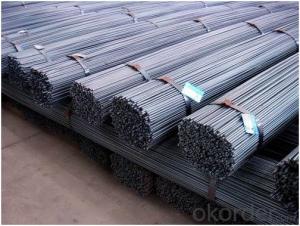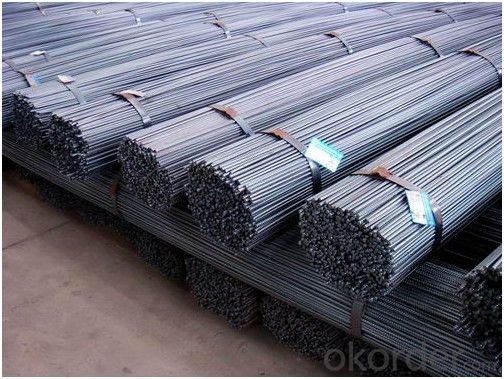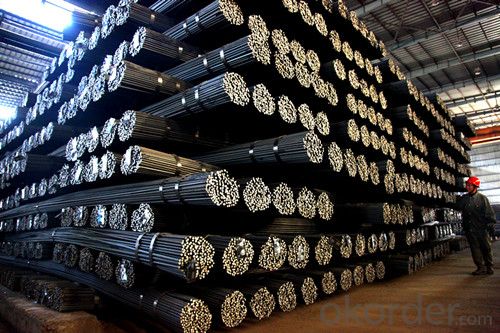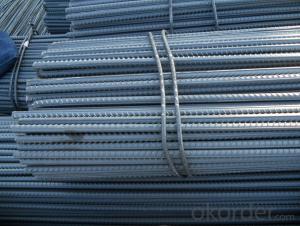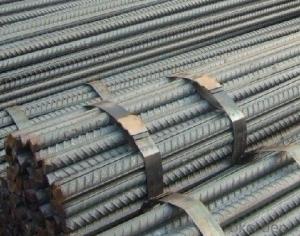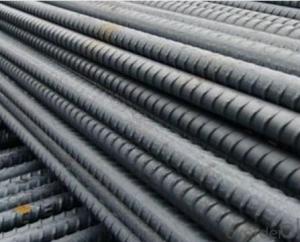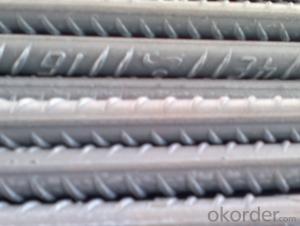Deformed Bars/ Reinforcing Steel Bars/ Rebar for Construction from China Professional Manufacturer
- Loading Port:
- Tianjin
- Payment Terms:
- TT or LC
- Min Order Qty:
- 30 m.t.
- Supply Capability:
- 40000 m.t./month
OKorder Service Pledge
OKorder Financial Service
You Might Also Like
Product Specifications of Deformed Bars/ Reinforcing Steel Bars/ Rebar for Construction from China Professional Manufacturer
1. reinforcing steel bar
2.diameter:6mm-40mm
3.length:3.5m-12m or as customized
4.certificate:ISO9001:2008,ISO14001:2004
Produt Size and Materials of Deformed Bars/ Reinforcing Steel Bars/ Rebar for Construction from China Professional Manufacturer:
(1)6mm-40mm rebar
(2)12mm-300mm round bar
(3)0.40-1.2mm*1000-1250mm*C electro galvanized steel coil
(4)0.16-1.0mm*900-1250mm*C prepainted galvanized steel coil
(5)0.15-2.0mm*900-1250mm*C hot dipped galvanized steel coil and aluzinc steel coil
(6)0.3-2.0mm*400-1400mm*C cold rolled steel coil
(7)0.80mm-2.0mm mig welding wire
The products exported to Korea, Japan and Southeast Asia, and have a good reputation.
Luli Steel Co., Ltd warmly welcomes all the customers to come to discuss the cooperation and seek common development.
If any questions and need steel information,pls feel free to contact me.
Theorectical Weight Index of Deformed Bars/ Reinforcing Steel Bars/ Rebar for Construction from China Professional Manufacturer:
Diameter (MM) | Inner Diameter (mm) | Rib height (mm) | Cross Sectional Area (MM²) | Theorectical Weight (KG/M) |
6 | 5.8 | 0.6 | 28.27 | 0.222 |
8 | 7.7 | 0.8 | 50.27 | 0.395 |
10 | 9.6 | 1.0 | 78.54 | 0.617 |
12 | 11.5 | 1.2 | 113.1 | 0.888 |
14 | 13.4 | 1.4 | 153.9 | 1.21 |
16 | 15.4 | 1.5 | 201.1 | 1.58 |
18 | 17.3 | 1.6 | 254.5 | 2 |
20 | 19.3 | 1.7 | 314.2 | 2.47 |
22 | 21.3 | 1.9 | 380.1 | 2.98 |
25 | 24.2 | 2.1 | 490.9 | 3.85 |
28 | 27.2 | 2.2 | 615.8 | 4.83 |
32 | 31.0 | 2.4 | 804.2 | 6.31 |
36 | 35.0 | 2.6 | 1018 | 7.99 |
40 | 38.7 | 2.9 | 1257 | 9.86 |
standard and grade of Deformed Bars/ Reinforcing Steel Bars/ Rebar for Construction from China Professional Manufacturer
ASTM | BS | JIS | GB |
A615 | BS4449 | G3112 | HRB |
Gr40/60/75 | Gr460, B500 | SD390 | 335/400/500 |
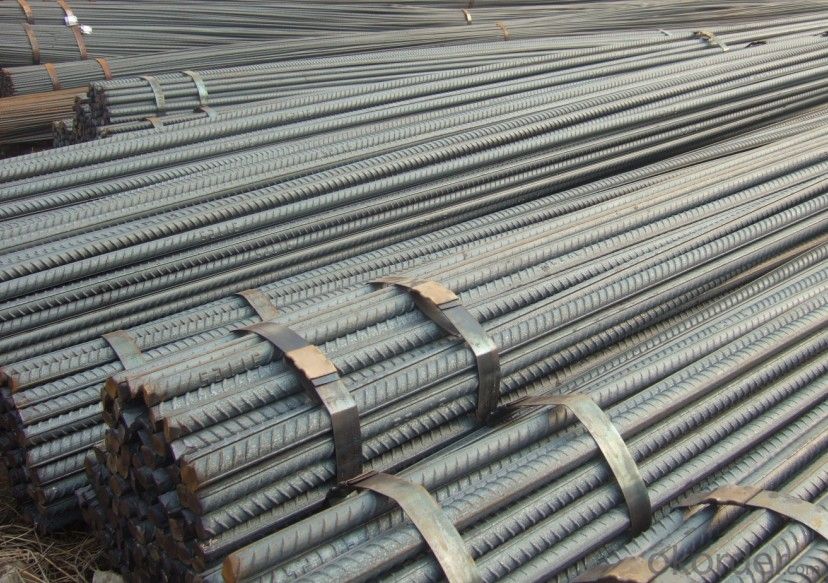
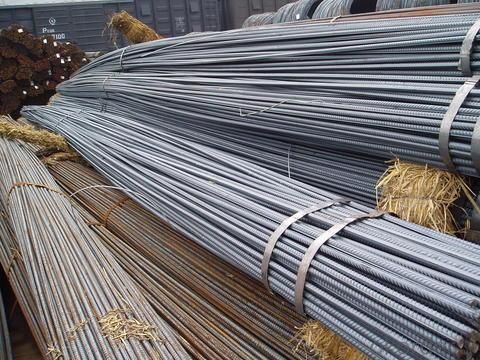
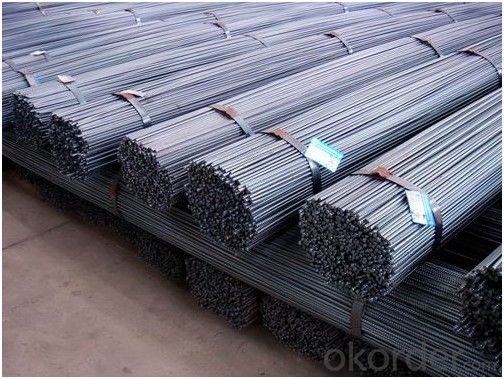
- Q: How do steel rebars affect the fire resistance of a structure?
- Steel rebars can have both positive and negative effects on the fire resistance of a structure. On one hand, steel rebars can enhance the fire resistance of a structure by providing additional strength and stability. The presence of steel rebars in concrete structures can help prevent collapse during a fire, allowing more time for occupants to evacuate and emergency responders to control the situation. However, steel rebars also have some drawbacks when it comes to fire resistance. Steel is a highly conductive material, meaning it can transfer heat quickly. During a fire, the steel rebars can heat up and transfer the heat to the surrounding concrete, potentially weakening its structural integrity. This can result in a reduced fire resistance of the structure. To mitigate the negative effects of steel rebars on fire resistance, certain measures can be taken. One common approach is to apply fire-resistant coatings or wraps to the steel rebars. These coatings or wraps act as a barrier, slowing down the heat transfer from the steel to the concrete, thus enhancing the fire resistance. Additionally, the size, spacing, and arrangement of steel rebars can also impact the fire resistance of a structure. Proper design and placement of rebars can ensure that the heat is distributed more evenly, reducing the risk of localized weakening and structural failure. In summary, steel rebars can have a significant impact on the fire resistance of a structure. While they can enhance the overall strength and stability, they can also contribute to the heat transfer and potential weakening of the structure. By implementing appropriate measures such as fire-resistant coatings and proper design, the negative effects of steel rebars on fire resistance can be minimized, ensuring the safety and integrity of the structure during a fire.
- Q: Can steel rebars be used in retaining wall construction?
- Yes, steel rebars can be used in retaining wall construction. They are commonly used to reinforce concrete walls and provide additional strength and stability to the structure. The rebars are typically embedded within the concrete to prevent cracking and increase the wall's resistance to lateral pressure from the retained soil.
- Q: Can steel rebars be used in underground construction projects?
- Yes, steel rebars can be used in underground construction projects. Steel rebars are commonly used for reinforcement in concrete structures, including those built underground. They provide strength and durability to the construction, making them suitable for various underground applications such as tunnels, basements, and underground parking structures.
- Q: How do steel rebars affect the thermal properties of concrete?
- Steel rebars can significantly affect the thermal properties of concrete by increasing its thermal conductivity. Due to their high thermal conductivity compared to concrete, steel rebars act as heat bridges, allowing heat to transfer more easily through the structure. This can result in increased heat loss or gain, affecting the overall thermal performance of the concrete.
- Q: Can steel rebars be used in railway track construction?
- Yes, steel rebars can be used in railway track construction. They are commonly used as reinforcement in concrete sleepers or ties, which form the base for railway tracks. The rebars provide strength and durability to the sleepers, ensuring the stability and longevity of the railway tracks.
- Q: Are there any specific codes and standards for steel rebars?
- Yes, there are specific codes and standards for steel rebars. The most widely recognized and used codes and standards for steel rebars include the American Society for Testing and Materials (ASTM) A615 and A706, the Canadian Standards Association (CSA) G30.18, and the European Standard EN 10080. These codes and standards outline the requirements for the physical properties, chemical composition, dimensions, and testing methods of steel rebars, ensuring their quality and performance in various construction applications.
- Q: What are the properties of steel rebars?
- Steel rebars, also known as steel reinforcing bars, possess several important properties. Firstly, they have high tensile strength, making them capable of withstanding heavy loads and stresses without breaking or bending easily. Secondly, they have excellent durability and resistance to corrosion, which ensures their long-term structural integrity. Moreover, steel rebars exhibit good thermal conductivity, allowing them to dissipate heat efficiently in high-temperature environments. Additionally, they are malleable and can be easily bent or shaped to fit different construction needs. Lastly, steel rebars have excellent bond strength with concrete, enabling the efficient transfer of loads between the two materials in reinforced concrete structures.
- Q: What are the different sizes of steel rebars available in the market?
- The market offers a variety of steel rebar sizes to cater to the specific needs and requirements of construction projects. Typically, steel rebars are available in a range of diameters, which commonly span from 6mm to 40mm. The designated sizes are determined by the nominal diameter of the rebar. Among the steel rebars available in the market, the most frequently utilized sizes are 6mm, 8mm, 10mm, 12mm, 16mm, 20mm, 25mm, 32mm, and 40mm. These sizes are extensively employed in various construction applications and can easily be found in most hardware stores. The selection of the rebar size is reliant on the structural design, the required load-bearing capacity, and the specific construction project. Smaller diameter rebars, such as 6mm or 8mm, are commonly employed in light construction projects or instances where a lesser load-bearing capacity is necessary. Conversely, larger diameter rebars, such as 25mm or 32mm, are often used in heavy-duty construction projects or structures that demand higher load-bearing capacity. To determine the appropriate rebar size for a particular project, it is crucial to consult with structural engineers or construction professionals. They can offer guidance based on the design requirements and structural calculations.
- Q: Can steel rebars be used in earthquake-resistant structures?
- Yes, steel rebars can be used in earthquake-resistant structures. Steel rebars provide reinforcement to concrete structures, making them stronger and better able to withstand seismic forces during an earthquake. The use of steel rebars helps to enhance the structural integrity and overall safety of buildings in earthquake-prone areas.
- Q: What are the different methods of reinforcing concrete structures using steel rebars?
- There are several methods of reinforcing concrete structures using steel rebars. 1. Traditional Reinforcement: This method involves placing steel rebars in the formwork before pouring concrete. The rebars are positioned in a predetermined pattern and secured with wire or tie rods to ensure they stay in place during the concrete placement. This method is commonly used for reinforcing columns, beams, and slabs. 2. Pre-stressed Reinforcement: In this method, high-strength steel rebars are pre-stressed before being placed in the concrete structure. This is usually achieved by stretching the rebars and then anchoring them to resist the tensile forces that will be exerted on the structure. Pre-stressed reinforcement is commonly used in bridges and large-span structures where high strength and durability are required. 3. Post-tensioning: Post-tensioning is a technique used to reinforce concrete structures after the concrete has hardened. It involves inserting steel tendons into pre-determined ducts or sleeves within the concrete and then applying tension to the tendons using hydraulic jacks. This process helps to counteract the tensile forces and increase the overall strength and load-carrying capacity of the structure. 4. Fiber Reinforcement: Instead of using traditional steel rebars, fiber reinforcement involves adding small fibers made of materials like glass, polypropylene, or steel to the concrete mix. These fibers help to distribute and control cracks that may occur due to shrinkage or thermal expansion. Fiber reinforcement is often used in applications such as industrial flooring, shotcrete, and precast concrete products. 5. Reinforced Concrete Masonry: In this method, steel rebars are inserted into the mortar joints of concrete masonry units (CMUs) to increase the strength and stability of the structure. The rebars are placed vertically and horizontally at specific intervals and then grouted to ensure a solid bond between the rebars and the CMUs. Overall, these different methods of reinforcing concrete structures using steel rebars provide various options for engineers and designers to enhance the strength, durability, and load-carrying capacity of concrete structures, depending on the specific requirements of the project.
Send your message to us
Deformed Bars/ Reinforcing Steel Bars/ Rebar for Construction from China Professional Manufacturer
- Loading Port:
- Tianjin
- Payment Terms:
- TT or LC
- Min Order Qty:
- 30 m.t.
- Supply Capability:
- 40000 m.t./month
OKorder Service Pledge
OKorder Financial Service
Similar products
Hot products
Hot Searches
Related keywords
